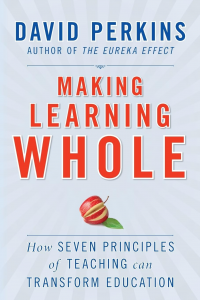[April 2016] At last week’s #asugsv Summit, the annual bacchanal where dilettantes, amateurs, libertarians, billionaires, and Silicon Valley mercenaries gather to plot the destruction of public education in plain view, Dr. Condoleeza Rice of 9/11 and Iraqi war infamy shared her expertise on “reforming” public education. Like many simpletons and profiteers, Dr. Rice seeks salvation in dystopian technology and reportedly demonstrated a level of understanding of educational technology similar to her imaginary “mushroom cloud” in Baghdad.
“Technology is neutral,” Rice observed. “It’s how it is applied that matters.” Technology can be used to support a world in which a child’s zip code or color or gender or age doesn’t shape their future—just their commitment to getting an education, she said. (Edsurge – Heard & Overheard at the ASU+GSV Summit. April 19, 2016.)
No. You are profoundly wrong Dr. Rice!
In fact I detailed how wrong you are three years ago. Perhaps you didn’t read my daily brief entitled, “Technology is Not Neutral!” You may read it below…
Larry Ferlazzo invited me to share a vision of computers in education for inclusion in his Classroom Q&A Feature in Education Week. The text of that article is below.
You may also enjoy two articles I published in 2008:
Technology is Not Neutral
Educational computing requires a clear and consistent stance
© 2013 Gary S. Stager, Ph.D.
There are three competing visions of educational computing. Each bestows agency on an actor in the educational enterprise. We can use classroom computers to benefit the system, the teacher or the student. Data collection, drill-and-practice test-prep, computerized assessment or monitoring Common Core compliance are examples of the computer benefitting the system. “Interactive” white boards, presenting information or managing whole-class simulations are examples of computing for the teacher. In this scenario, the teacher is the actor, the classroom a theatre, the students the audience and the computer is a prop.
The third vision is a progressive one. The personal computer is used to amplify human potential. It is an intellectual laboratory and vehicle for self-expression that allows each child to not only learn what we’ve always taught, perhaps with greater efficacy, efficiency or comprehension. The computer makes it possible for students to learn and do in ways unimaginable just a few years ago. This vision of computing democratizes educational opportunity and supports what Papert and Turkle call epistemological pluralism. The learner is at the center of the educational experience and learns in their own way.
Too many educators make the mistake of assuming a false equivalence between “technology” and its use. Technology is not neutral. It is always designed to influence behavior. Sure, you might point to an anecdote in which a clever teacher figures out a way to use a white board in a learner-centered fashion or a teacher finds the diagnostic data collected by the management system useful. These are the exception to the rule.
While flexible high-quality hardware is critical, educational computing is about software because software determines what you can do and what you do determines what you can learn. In my opinion the lowest ROI comes from granting agency to the system and the most from empowering each learner. You might think of the a continuum that runs from drill/testing at the bottom; through information access, productivity, simulation and modeling; with the computer as a computational material for knowledge construction representing not only the greatest ROI, but the most potential benefit for the learner.
Piaget reminds us ,“To understand is to invent,” while our mutual colleague Seymour Papert said, “If you can use technology to make things, you can make more interesting things and you can learn a lot more by making them.”
Some people view the computer as a way of increasing efficiency. Heck, there are schools with fancy-sounding names popping-up where you put 200 kids in a room with computer terminals and an armed security guard. The computer quizzes kids endlessly on prior knowledge and generates a tsunami of data for the system. This may be cheap and efficient, but it does little to empower the learner or take advantage of the computer’s potential as the protean device for knowledge construction.
School concoctions like information literacy, digital citizenship or making PowerPoint presentations represent at best a form of “Computer Appreciation.” The Conservative UK Government just abandoned their national ICT curriculum on the basis of it being “harmful and dull” and is calling for computer science to be taught K-12. I could not agree more.
My work with children, teachers and computers over the past thirty years has been focused on increasing opportunity and replacing “quick and easy” with deep and meaningful experiences. When I began working with schools where every student had a laptop in 1990, project-based learning was supercharged and Dewey’s theories were realized in ways he had only imagined. The computer was a radical instrument for school reform, not a way of enforcing the top-down status quo.
Now, kindergarteners could build, program and choreograph their own robot ballerinas by utilizing mathematical concepts and engineering principles never before accessible to young children. Kids express themselves through filmmaking, animation, music composition and collaborations with peers or experts across the globe. 5th graders write computer programs to represent fractions in a variety of ways while understanding not only fractions, but also a host of other mathematics and computer science concepts used in service of that understanding. An incarcerated 17 year-old dropout saddled with a host of learning disabilities is able to use computer programming and robotics to create “gopher-cam,” an intelligent vehicle for exploring beneath the earth, or launch his own probe into space for aerial reconnaissance. Little boys and girls can now make and program wearable computers with circuitry sewn with conductive thread while 10th grade English students can bring Lady Macbeth to life by composing a symphony. Soon, you be able to email and print a bicycle. Computing as a verb is the game-changer.
Used well, the computer extends the breadth, depth and complexity of potential projects. This in turn affords kids with the opportunity to, in the words of David Perkins, “play the whole game.” Thanks to the computer, children today have the opportunity to be mathematicians, novelists, engineers, composers, geneticists, composers, filmmakers, etc… But, only if our vision of computing is sufficiently imaginative.
Three recommendations:
1) Kids need real computers capable of programming, video editing, music composition and controlling external peripherals, such as probes or robotics. Since the lifespan of school computers is long, they need to do all of the things adults expect today and support ingenuity for years to come.
2) Look for ways to use computers to provide experiences not addressed by the curriculum. Writing, communicating and looking stuff up are obvious uses that require little instruction and few resources.
3) Every student deserves computer science experiences during their K-12 education. Educators would be wise to consider programming environments designed to support learning and progressive education such as MicroWorlds EX (now Lynx), SNAP!, MakeCode, and Scratch.
In addition to being a veteran teacher educator, popular speaker, journalist, author, and publisher, Gary is co-author of the bestselling book called the “bible of the maker movement in schools”, Invent To Learn — Making, Tinkering, and Engineering in the Classroom. He also leads the Constructing Modern Knowledge summer institute and is Publisher at CMK Press. Gary Stager’s most recent book, Twenty Things to Do with a Computer Forward 50: Future Visions of Education Inspired by Seymour Papert and Cynthia Solomon’s Seminal Work, shares visions for learner-centered educational computing from four dozen experts around the world.
The issue of who benefits from technology in the education space and its lack of neutrality is explored more fully in this book.
Veteran educator Gary Stager, Ph.D. is the author of Twenty Things to Do with a Computer – Forward 50, co-author of Invent To Learn — Making, Tinkering, and Engineering in the Classroom, publisher at Constructing Modern Knowledge Press, and the founder of the Constructing Modern Knowledge summer institute. He led professional development in the world’s first 1:1 laptop schools thirty years ago and designed one of the oldest online graduate school programs. Gary is also the curator of The Seymour Papert archives at DailyPapert.com. Learn more about Gary here.



